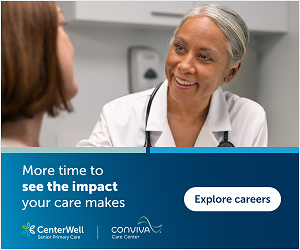iPads have been introduced into medical education mostly during the pre-clinical years. I’d like to share my experience using an iPad during my clinical year. I’ve found it to be exceedingly useful and versatile.
I have an entire medical library in my pocket. With the touch of a button I can pull up essential texts such as Harrison’s Principles of Internal Medicine or William’s Endocrinology. I get these books and more through my school’s subscription to MDConsult and AccessMedicine. Some other ancillary material that I have as PDFs can be stored and viewed with ease on the iBook app. I’ve also been using the beautiful e-reader app Inkling to keep full copies of popular texts such as Bates Guide to the Physical Examination stored on my device. Several times a day, I use these sources to look things up that I encounter in the patient-care setting.
When it comes time to write my H&Ps, I use native such as UptoDate, Medscape and FirstConsult to help me formulate my assessment and plan. I also use Papers to find and organize journal articles that also make their way into my write-ups. I use epocrates to find out the appropriate dosing for patients I’m caring for and to check for any contraindications.
Recently, I started a radiology rotation. Needless to say, I’ve needed to brush up on my anatomy a bit. Rather than having to lug Netter’s Anatomy around with me in my bag, I now just pull up the whole collection of anatomy plates on the Netter’s app for iPad. This has been a huge boon.
iPad also helps me ensure that I don’t forget all the things I’m seeing on the wards. Since last year, I’ve been using a digital spaced-repetition flashcard program called Anki. Adopting Anki as my primary mode of study has paid tremendous dividends. I recommend it to everyone. I used it last year for the basic sciences, and I use it this year to capture all the nuggets of knowledge from the wards. If I hear, see or read something, I make a card on the spot and add it to my library. When there is downtime, I just pull out my iPad and review those and other cards to keep things fresh in my head. I’ve found this process invaluable. On the wards, study time is distributed in small chunks throughout the day, rather than in large blocks as it was in the pre-clinical years. Anki and iPad have allowed me to take advantage of those little moments in a way I wouldn’t be able to otherwise.
Basic tools such as email and calendar help me stay connected and organized. I use the note program Evernote to capture thoughts or impressions I generate from my experiences. I also use this program to make to-do lists for the patients I’m carrying.
I’ve tried to incorporate iPad into patient care and education as much as possible.
One salient example is from my recent pediatrics rotation. Our team cared for a newborn who was showing signs of what appeared to be benign neonatal sleep myoclonus. The baby’s mother was very disturbed by the sight of her new (and first) daughter contracting during her sleep. When I was presenting this case on rounds, I pulled up a Youtube video of benign neonatal sleep myoclonus and showed it to the parents and the rest of my team. When the mom saw the video of someone else’s baby twitching like her own, she was reassured that her daughter’s condition was fairly common and of little concern. Likewise, the rest of my team, which included residents, medical students, nurses and attendings, got a better view of what benign sleep myoclonus looks like. This particular experience showed me the great power that iPads and similar technology can have at the bedside.
Accessing medical records is also a big part of patient care. Most patient information is electronic at Duke and we have a dedicated system for managing that info. With the Citrix receiver program, I can tap into our EMR system via my iPad. This ability has been most useful on rounds. There have been several times where key patient labs were still pending at the time when we started rounding. With my iPad, I’m able to periodically check for lab values; more than a few times, I’ve been spared from having to omit lab values in my presentation because I was able to retrieve them while on foot.
There are some ways where I’ve been less than impressed with iPad and I’d be remiss to not mention these points. On the whole, iPad has been a terrific consumption tool, but not a very good input tool. I’ve tried to use it to record notes during patient interviews, both by typing and with a stylus, and neither is satisfactory. By both methods, I lack the speed and accuracy to capture the information I need. Paper and pen is still superior in a lot of cases. In the instances where I’ve tried to use my iPad during patient interviews, I’ve felt like it was a barrier between me and the patient. I could sense that my patients felt like I wasn’t completely paying attention to them. Truth be told, I wasn’t. I was too busy making sure that the lines I scrawled or notes I pecked were accurate. I asked myself, “Who wants a medical student (someday physician) who focuses more on a computer than on the person?” And with that, I put away the iPad. For now at least. When the technology gets better, I do think iPad and tablets in general will be the preferred method of information acquisition, but until then, a notepad will suffice.
Along the lines of paying attention, I’ve also sensed that some of my preceptors don’t appreciate my use of the iPad. I think they assume I’m goofing off on facebook or tweeting or something like that. I think that perception will change with more and more people bring tablets into the clinical setting, but for the time being, medical students should be sensitive to this. I’ve found that just asking before using my iPad helps avoid any hurt feelings (and poor evaluations!).
So there you have it. That is my experience with the iPad. There is no doubt that I’m learning more and better because of this incredible device. I’m very grateful that I get to be a medical student in 2011. I am excited to see how the iPad and similar technology continues to transform and improve medical education in the coming years.
Alex Chamessian is a medical student who blogs at Dr. Willbe.
Submit a guest post and be heard on social media’s leading physician voice.







![Why are medical students turning away from primary care? [PODCAST]](https://kevinmd.com/wp-content/uploads/Design-3-190x100.jpg)









